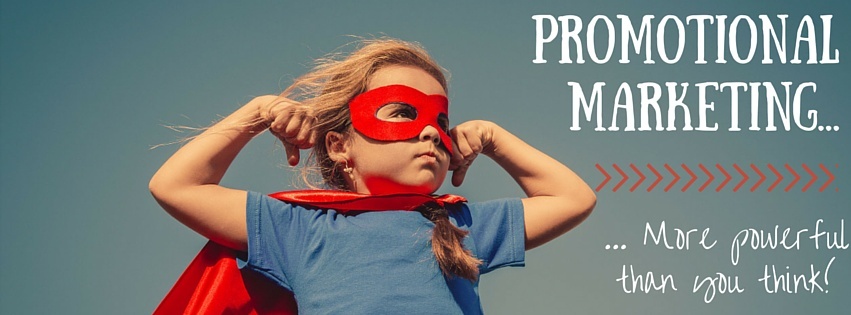 Many people understand the concept of branded material. It is a common sighting at any company sponsored event and can be found virtually everywhere we look. Since it has become so commonplace, many marketers have brushed it under the rug and deemed it the “ugly stepsister” to inbound. It’s not really valuable, but those branded pens are a necessary evil, right?
Many people understand the concept of branded material. It is a common sighting at any company sponsored event and can be found virtually everywhere we look. Since it has become so commonplace, many marketers have brushed it under the rug and deemed it the “ugly stepsister” to inbound. It’s not really valuable, but those branded pens are a necessary evil, right?
While this reputation has seemed to stick for some people, I’m here to tell you that promotional items can be just as valuable as the blog you just wrote, or the social media strategy you developed. And here’s why.
The Facts
Did you know that six in 10 consumers will keep promotional products for up to two years? Two years! That’s a long time. And even if the item sits on a table and isn’t touched by the consumer for that period of time, it is still in the hands of the market and has the opportunity to reach more people than if it were never produced.
What’s more. if you are able to develop a promotional campaign that consists of items that consumers deem useful, of good quality and to have a long life-span, this item that you’ve given out could be physically traveling with the consumer, creating a walking advertisement for your brand. Not only will the consumer have it with them, potentially catching another prospect’s eye, they will be more likely to start conversations about your product or even your brand. Having the ability to align the two in a clear consistent way is key to successfully making an impression on prospects.
Don’t be so quick to declare the demise of promotional marketing.
Fifty-three percent of the time, promo products create a more favorable impression of the advertiser, and 89 percent of consumers can recall the advertiser of a promotional product they received in the last two years. This is a big deal.
As marketers, we are always striving to gain awareness of our brand. The concept of inbound is done through the cultivation and dissemination of thought leadership. But with promotional products, you create a direct link to your branding and your offerings. By gifting a useful item to your prospects, you can not only win brownie points in their book, but with the right item, you can also establish yourself as a presence in their daily life.
The Struggle
As great as they are promotional items are not without their challenges. There is a low barrier to entry for branded items, meaning mostly any company can slap their name on a pen and hand it out to everyone they see. Second, many promotional campaigns are not focused on target consumers and do not account for the lifecycle. This means that your approach must be thought out, and your strategy development (like any good strategy) will take time.
You will also need to get creative, considering the market for these products is so saturated and readily available. For many of our clients, this is where we come in. Adding a promotional product to the media mix increases the effectiveness of other media by up to 44 percent. It also helps tremendously to consolidate services and have your inbound handled by the same provider of your promotional items. Dealing with a single source for each part of your marketing presence creates consistency and removes unnecessary moving parts.
The End…
…of the undeserving reputation of promotional items!
As shown in the cited article above, mugs, bags and wearables are among the most widely used and effective promotional items. These are simple selections that can add a huge amount of value to your campaigns. If these items bore you, you can always opt to get adventurous with products and explore new ideas to grab prospects’ attention, but the “next big thing” is not always that way for long.
So whatever your final choice may be, make sure it has a sustainable useful life. We often present to our clients a highly useful and retail-looking item that is discretely and tastefully decorated so that they don’t feel as though they have been made into a billboard or a messenger.
What about your own promotional product stories? Did you see success, or was it a flop? I’d love to hear your feedback and experiences on the topic!
